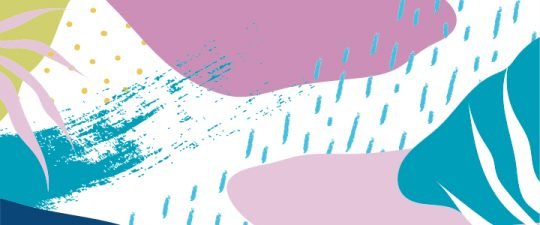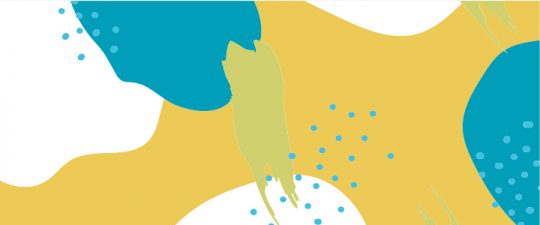There are various methods people use to acquire information due to individual differences. Many children and even adults need the utmost guidance to learn something and not to procrastinate. They put off doing things due to a lack of motivation, boring topics or a negative atmosphere in class. Because people gain knowledge in different ways, there is a need for educators to involve those who learn in different processes. Experts develop unique effective learning strategies. At Edusson.com, you can find the best learning strategies and techniques that can help you become a top student in your program. Our blog posts include helpful tips and tools that can help you become a more independent and successful student.
A university student has to use strategic learning to overcome academic struggles to lessen the burdens of passing tests and graduating. Also, a collegian should have customized learning techniques to stay productive. When you get down to it, it will be easier to do tasks and studying in general.
What Are Learning Strategies and Why Are They Important?
Learning can be a daunting task, but with the right strategies and tools, you can become an effective learner. Good study habits, such as setting clear goals and using technology to stay organized, are essential for success. Additionally, using a service to edit your research in a relevant way with adding new information can help you understand and remember concepts better. When it comes to studying, breaking the process down into manageable tasks can make the process simpler and more enjoyable. Taking frequent study breaks and rewarding yourself for completing tasks can also aid in effective learning.
You may ask ‘what is a learning strategy?’ The definition of a learning strategy is very simple. In a nutshell, effective learning strategies help people comprehend lessons better. Professors have designed them for every student even those with special needs. They exist to address comprehension difficulties. Take note, that they are mere foundations. They are ideas that are helpful but should not be forced on anyone. No one can point out which learning method is most effective or the absolute best.
After all, personalized learning strategies are better. That is, a learner may find a certain technique useful for a given situation and unhelpful for another. Likewise, blended learning strategies are available. Through them, a learner applies many methods at once to take in knowledge with accuracy and speed.
What Are The Types Of Learning Strategies?
Today, there are numerous learning strategies for students as well as professionals who want to study more. To use them, you ought to know the details first. Above all, experts have made them for catering to various students.
None of the methods discussed is best. But combining them might lead to positive results. To use these techniques, experienced instructors assess students first. Then they apply whichever method is appropriate, observe, and review the outcomes.
Why Use Mnemonics as a Learning Strategy?
- The usage of rhyming, words, and acronyms can help learners memorize the items taught.
- Letters used as acronyms may aid in remembering things faster. There’s also acrostics that might come in handy for keeping a lot of details in mind. An example is organization names. Another case are the letters for tuning a guitar.
- Special words and those that rhyme can be substituted or shortened. Through them, it would be easy to commit lengthy words and phrases to memory. For example, one can use poetry and make original songs to recall points sometimes.
Can Structural Learning Theory Help?
- Yes, it might help. For years, many students have benefited from it.
- It may be challenging since the goal is for learners to produce solutions to solve problems.
- Teaching simple rules to students can theoretically result in skills to solve difficult issues. It usually applies to solving math problems and understanding equations.
Are Generative Learning Systems Useful?
- It’s an approach that helps to learn through the application of memory. For example, to develop problem-solving abilities, teachers introduce ideas for review.
- Rather than spoon-feeding them, lecturers ask students to come up with original solutions. They let pupils answer questions using real memories or unique thoughts. Paraphrasing and giving citations are examples.
- To impart knowledge, educators provide engaging materials to elicit learner’s resourcefulness, which involves developing active recall through stimulation.
Incorporate Kinesthetic-Tactile Learning Techniques
- It’s a time-tested approach to teaching. Many experts recommend it.
- A lot of children do well in remembering something once a they touch and feel objects. The same is true when they do activities using their hands. Implementation may involve playing and manual work, depending on the mentees’ age.
- Muscle or physical memory develops in such a way. But for it to work, students have to be in motion and interact with tangible objects. Drawing is a prime sample because it entails holding a pen and moving one’s hands and fingers to draw.
How Do Students Benefit With Metacognitive Strategies?
- Educators conceptualized metacognitive strategies to guide kids in understanding how they comprehend lessons. Through this method teachers also help students develop their own studying routine.
- Thinking aloud and creating a checklist are what Mentors ask students to think aloud and create a checklist. Through these activities, learners can realize the value of actions and also choose the most suitable solutions for themselves.
- This strategy involves setting an example but it isn’t for learners only to emulate but to let young ones have the readiness to handle various situations.
Is It Worth It to Try Active Learning Styles?
- Student involvement is essential for this method. Participation is necessary here because mentors make students responsible for their comprehension.
- This approach involves the class to take up roles. Some examples are class reporting, doing peer reviews, and collaborative problem solving.
- Many claim that this is more effective than passive instruction. That’s because it lets learners take initiative, beat boredom, and boost their self-confidence.
Effective and successful learning can be achieved if you know how to manage your time and resources. But sometimes it can be challenging to keep up with all the new knowledge, especially when it comes to complex subjects. That is why doing your assignment online is a great way to get the help and guidance you need to remain on top of your studies. With a little help from technology and access to resources, you can easily do my assignment online and feel confident about the results.
What Are Effective Learning Strategies for Different Levels?
It is typical that mental growth comes with age, which means that young children, most of the time, need more instruction compared to adults. In addition, it is inappropriate to instruct students when they’re already experts. In teaching, one ought to use correct learning strategies for students and professionals.
What Are The Right Means for Strategic Learning for Middle School Students?
- Kids in elementary school have a lot to study before proceeding to the next phase. According to Erickson’s theory, students aged 5 to 13, it’s industry versus inferiority. Meaning that basic offline or online education is imperative.
- Experienced instructors recommend using mnemonics as well as visual and auditory aids. Materials for passive studying are helpful too. Take note that youth is not as equipped as adults are.
- Yet authorities in education encourage mentors to apply all the styles mentioned above. This is due to the idea that young learners also need to face the challenges to grow and become smarter. But the methods should not overwhelm any child. Because of this, it is important to try them one after another and not all together.
Can One Identify The Most Effective Learning Methods for High School Students?
- Ages 13 and up, pupils are more educated. It’s the time of identity versus confusion. Here, teens want to have more independence and understand themselves better. They may also cheat and use a fast essay writing service to complete their assignments as they may think that education is not necessary and it is better to spend time for hobbies, partying etc. It’s great in terms of time management for students, but has negative impact on their progress. So a teacher should utilize the most effective learning techniques to motivate this generation.
- This group may be more mature but guidance is still crucial. On their own, students can learn through being in motion.
- To remember lessons, mnemonics is still widely used. But usually, instructors utilize Metacognitive, Generative, Structural, and Active learning strategies. Teens need to take initiative, be responsible, and develop critical thinking skills. That’s why the educational system places such a burden on them.
What Teaching Approaches Are For College Students?
- Because the bulk of the school work, mnemonics may be helpful. Shortcuts can make life easier during university. To prepare for professional dealings, the Metacognitive and Active styles might be fitting.
- Yet, in tertiary academies, blended learning strategies are usually applied. Professors prepare students to face real-life situations through subjects via research.
Are These Teaching Methods Fitting for Graduates and Ph.D. degree holders?
- If certified individuals or professionals need further education, teaching them is compulsory. But, graduate school teachers already consider these individuals as experts.
- In the Generative Learning Theory by Merlin Wittrock, ideas and schema should combine. That’s so education can take place. To apply this, lecturers can ask researchers to solve issues using their cognition. But the problems presented ought to be realistic. Moreover, reaching remedies should be the target.
This article mentions 6 study strategies that instructors can incorporate their teaching. The styles are for different school levels and can be helpful to those with disabilities too. But educators should consider using strategies based on student requirements. While lecturing students, professors ought to note their audiences age. There are different learning strategies for each age group. With the correct approaches, pupils won’t fail in learning. Moreover, educators should also be aware of the different writing techniques for persuasive essay writers. For instance, they should focus on providing strong evidence, using clear and logical arguments, and effective counterarguments. By taking into account these techniques, students will be able to write persuasive essays that are well-structured and convincing.




